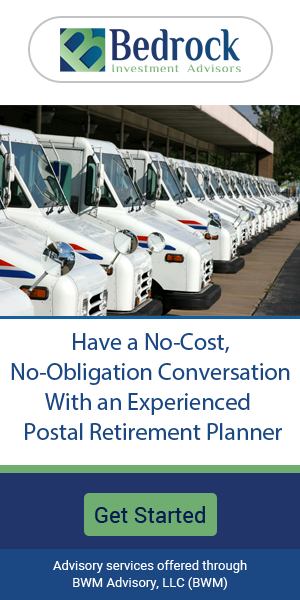Key Takeaways
- Starting early is the key to maximizing your federal retirement benefits and ensuring a comfortable future.
- Understanding how different retirement systems work (FERS, TSP, Social Security) can help you make informed decisions and avoid common pitfalls.
Why Retirement Planning Matters Now—Don’t Wait!
- Also Read: Are You Eligible for the Federal Employee Retirement System (FERS)? Find Out Here
- Also Read: Why TSP Withdrawal Options Might Be More Flexible Than You Think for Federal Retirees
- Also Read: The Top Federal Employee Benefits You Should Be Tapping Into Right Now
FERS and CSRS: Understanding Your Retirement Systems
The first thing you need to know is which retirement system applies to you. If you joined the federal workforce after 1987, you’re most likely covered by the Federal Employees Retirement System (FERS). If you started earlier, you might be under the Civil Service Retirement System (CSRS).
FERS comes with three parts:
- The basic benefit (your pension)
- Social Security
- The Thrift Savings Plan (TSP), which acts like a 401(k) for federal workers
CSRS, on the other hand, doesn’t include Social Security benefits, but it offers a more generous pension compared to FERS. The catch? CSRS employees might see a reduction in their Social Security benefits later due to the Windfall Elimination Provision (WEP).
How Much Will Your Pension Be?
One of the biggest concerns federal workers have is how much income they’ll actually receive in retirement. Here’s where it gets tricky. For FERS employees, your pension is based on your years of service, your “high-3” salary (the average of your three highest-earning years), and a multiplier. The formula looks like this:
Pension = High-3 Average Salary × Years of Service × 1%
If you retire at age 62 with at least 20 years of service, that multiplier increases to 1.1%.
For CSRS employees, the formula is a bit different but typically results in a larger pension. However, since CSRS doesn’t include Social Security, you’ll need to rely more heavily on your pension and TSP savings for retirement income.
Don’t Forget About Social Security
Speaking of Social Security, don’t ignore it! Even if you’re not planning on claiming it right away, it’s important to understand how it fits into your retirement plan. FERS employees contribute to Social Security, so you’ll be eligible for benefits starting as early as age 62. Keep in mind, though, that taking Social Security early reduces your benefits for life. If you can wait until your full retirement age (around 66 or 67, depending on when you were born), or even until age 70, you’ll maximize your monthly check.
The Power of the TSP—Don’t Leave Money on the Table!
The Thrift Savings Plan (TSP) is your best friend when it comes to retirement savings. The government matches up to 5% of your contributions, so if you’re not contributing at least that much, you’re leaving free money on the table.
The earlier you start contributing, the more your TSP can grow thanks to the magic of compound interest. And don’t forget—once you turn 50, you can take advantage of “catch-up” contributions, allowing you to stash away even more money as you get closer to retirement.
Pro Tip: Keep an Eye on TSP Contribution Limits
For 2024, you can contribute up to $23,000 to your TSP. And if you’re 50 or older, you can add an additional $7,500 in catch-up contributions. Make sure you’re hitting those limits if possible, especially as you approach the end of your career.
Medicare and Your Health Insurance
Health care costs can be a major expense in retirement, and federal employees have a bit of an advantage here. If you’re eligible for FEHB (Federal Employees Health Benefits), you can keep your insurance into retirement, as long as you’ve been enrolled for the five years leading up to your retirement.
Once you hit 65, you’ll likely want to enroll in Medicare, which will work alongside your FEHB plan. This can help reduce your out-of-pocket costs and provide more comprehensive coverage. But remember: if you’re retiring after January 1, 2025, and you’re a postal worker, you’ll need to enroll in Medicare Part B to keep your Postal Service Health Benefits (PSHB) coverage.
When Should You Retire?
Timing your retirement is one of the most crucial decisions you’ll make. There’s no one-size-fits-all answer, but here are some factors to consider:
-
Minimum Retirement Age (MRA): Under FERS, your MRA is between 55 and 57, depending on your birth year. You can retire with a reduced pension as early as your MRA if you have at least 10 years of service.
-
Full Retirement: For a full, unreduced pension, you’ll need to retire at age 62 with at least 5 years of service, or at age 60 with at least 20 years of service.
-
Early Retirement Options: If you work in certain jobs, like law enforcement, you may be eligible for early retirement. But keep in mind that early retirement often comes with penalties unless you meet specific conditions.
Get Your Paperwork in Order
There’s nothing worse than scrambling to gather documents when you’re just months away from retirement. Trust me, you don’t want to be that person. Make sure you have all your ducks in a row well in advance. Here’s a quick checklist:
- Your SF-50 forms (to verify your years of service)
- TSP and Social Security statements
- FEHB records, if you’re keeping your health insurance
- Beneficiary forms for life insurance or any other benefits
Maximize Your Federal Benefits
The great thing about being a federal employee is that you have access to a ton of resources to help you plan for retirement. Whether it’s financial planning seminars, online calculators, or just a chat with your HR office, make sure you’re taking full advantage of everything available to you.
And remember—retirement is not just about money. It’s about making sure you have the time, energy, and resources to enjoy your life after work. So take the time now to plan, and you’ll thank yourself later.
How to Transition from Working to Retirement Mode
Finally, don’t underestimate the psychological shift from working to retiring. You’ve been working for decades, and suddenly, that part of your life will change. Spend some time thinking about what you want your retirement to look like. Are there hobbies you want to pursue? Travel plans? Volunteer opportunities? The clearer your vision is for your post-work life, the easier the transition will be.
Planning for the Life You Deserve
Retirement isn’t something that just happens—you have to plan for it. By understanding your retirement system, contributing to your TSP, and timing your retirement strategically, you can ensure that your retirement is as smooth as possible. Don’t wait until it’s too late. Start now, and you’ll be able to retire like a pro.












